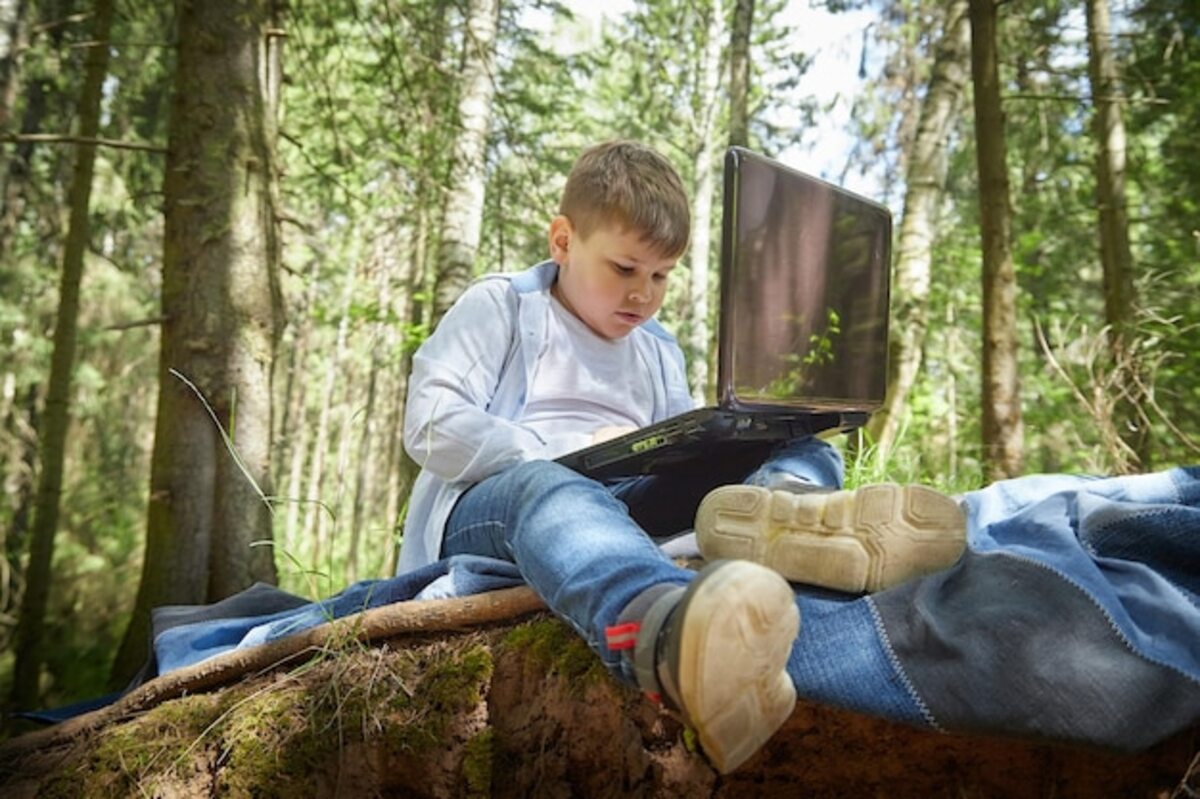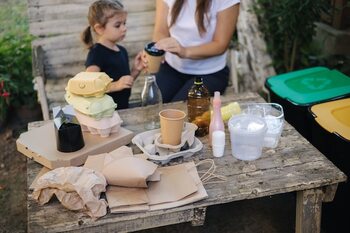Create a home that inspires family adventure and learning.

Create a home that inspires adventure and family learning, where every corner becomes a space conducive to exploration and growth. In our daily lives, it is essential to cultivate an environment that fosters curiosity and companionship among both adults and children. Imagine a place filled with creativity, interactive activities, and unforgettable moments. Through this article, you will discover how to transform your home into an exciting refuge that stimulates both adventure and family learning.
1. Multifunctional spaces: The key to an enriching experience
Multifunctional spaces have become an essential trend for creating a home that inspires adventure and family learning. By designing areas that can adapt to various activities, such as reading, playing, or even doing art projects, a dynamic environment is fostered where each family member can contribute to the collective experience. For example, a living room that also serves as a study area or a corner of the dining room designated for artistic creation allows both adults and children to engage in enriching activities without feeling constrained by the rigid features of a single-use space. The versatility of these spaces invites the exploration of new skills and passions together.
By incorporating modular furniture or creative storage solutions, you can quickly transform any room according to the needs of the moment. A table that extends for family games or shelves that hold both books and craft materials can work wonders in maximizing space. This approach not only maximizes the use of the home but also teaches the younger ones about the importance of organization and caring for their environment. In summary, multifunctional spaces are essential for cultivating an environment conducive to curiosity and continuous development, turning each day into a new adventure full of opportunities to learn together.
2. Decorative elements that tell stories of adventures
Decorative elements in the home can be much more than simple adornments; they are carriers of stories and memories that evoke the essence of adventures lived. When selecting decorative objects, consider those that tell a personal or cultural story, such as old maps, framed photographs of family trips, or unique souvenirs acquired during explorations. Each piece can become a starting point for meaningful conversations, where family members share anecdotes and experiences related to those memories. In this way, your home is not only filled with visual beauty but also with a rich narrative background that stimulates curiosity and the desire to learn.
Incorporate decorative elements that inspire your loved ones to dream of new adventures. For example, an antique compass or a globe can encourage children to explore different cultures and geographies, awakening their interest in the world around them. Illustrated books about travel and nature can find their place on accessible shelves, thus fostering active reading and the desire to discover new stories. By creating an environment where each object has an educational and emotional purpose, you will turn your home into a refuge full of inspiration for future generations, encouraging them to keep exploring both inside and outside the home.
3. The importance of reading nooks at home
Reading nooks are essential in a home that seeks to inspire adventure and family learning. These spaces not only provide a quiet place to enjoy books but also foster a culture of reading among family members. By creating a cozy corner with shelves filled with a variety of books, comfortable cushions, and good lighting, both young and old are invited to immerse themselves in fascinating stories and acquire new knowledge. A well-designed reading nook can become the favorite refuge where children develop their imagination while learning about different worlds and cultures.
Additionally, these spaces can be customized to reflect the unique interests of each family member. Including decorative elements related to favorite literary themes or using colors that stimulate creativity can make the corner even more special. Encouraging activities such as reading aloud, organizing family storytelling sessions, or even conducting creative workshops inspired by the books read can strengthen family bonds and turn the act of reading into a shared and enriching experience. In this way, reading corners not only serve to enjoy time individually but also transform into meeting points where literary adventures are experienced collectively.
4. Outdoor family activities: How to incorporate them into your routine
Incorporating outdoor family activities into your daily routine is an excellent way to strengthen family bonds while exploring the world around us. You can start by setting aside one day a week dedicated to going out and enjoying the natural environment, whether it's a nearby park, a beach, or a mountain trail. These moments not only provide a break from the daily hustle, but also offer opportunities for hands-on learning: from identifying plants and animals to practicing skills like navigation and teamwork. Involving each family member in the planning of these outings can increase their enthusiasm and commitment to the activities.
You can also transform everyday activities into outdoor adventures. For example, organize themed picnics where everyone prepares their favorite dish or go on hikes with exploration games, such as searching for natural treasures (special stones, different leaves) or taking creative photographs. These activities not only foster creativity and learning but also allow for shared moments filled with laughter and stories that will be etched in family memory. Always remember to bring materials to document these moments: notebooks for drawing, cameras, or even small journals where children can write about their experiences and discoveries.
5. Creating a "testing zone": Fostering scientific curiosity
Creating an "experiment zone" in your home is a wonderful way to foster scientific curiosity among family members. This space can be a dedicated corner in the living room, an area of the garage, or even a table in the garden, where children and adults can explore scientific concepts through hands-on activities. Providing basic materials like test tubes, containers, soil, seeds, and recyclable items will invite experimentation. Organize simple projects such as growing plants, creating volcanoes with baking soda, or observing insects. These experiences will not only be fun but will also boost critical thinking and problem-solving skills.
Additionally, to maximize the educational potential of this area, consider integrating visual resources such as informational posters on scientific topics or illustrated books that inspire new ideas. You can schedule specific days for family experiments, where everyone participates and shares their discoveries. As they engage in these hands-on activities, you will be cultivating not only their curiosity about the natural world but also valuable skills like collaboration and communication. In this way, your home will transform into a dynamic laboratory where each day presents a new opportunity to learn and explore together.
6. Family Art: Creative Projects to Do Together
Family art is one of the most effective ways to strengthen the bonds between parents and children, as well as to foster creativity and learning. Spending time on creative projects not only provides an opportunity to explore new techniques and materials, but also allows each family member to express their emotions and thoughts. From creating murals together to working on personalized family albums, each activity becomes a unique adventure where everyone can contribute their ideas. The key is to choose projects that are accessible to all ages, thus ensuring that everyone participates and feels valued.
Additionally, integrating art into the home can transform common spaces into personal galleries filled with shared memories. Placing an easel or a craft table in a special corner can inspire family members to come together and create. It doesn't matter if it's painting, collage, or sculpture; what matters is the process and the connection generated during the activity. At the end of the day, these moments not only result in unique works of art but also in cherished stories that will be etched in the collective memory of the home. Thus, family art not only beautifies your living space but also nurtures an environment where curiosity and the love for learning together can flourish.
7. Educational games: Purposeful fun at home
Educational games are an excellent way to combine fun and learning at home. By selecting activities that not only entertain but also teach important concepts, you can foster an environment where children develop critical skills while exploring their natural curiosity. From puzzles that stimulate logical thinking to board games that promote collaboration and strategy, each game offers a unique opportunity to learn through experience. Moreover, by participating together as a family, moments of bonding and communication are created that enrich relationships.
Incorporating educational games into the daily routine can be as simple as dedicating one night a week to play as a family. Turn that appointment into an expected and exciting ritual; allow each member to choose a different game each week. This variety not only keeps motivation high but also ensures that everyone is exposed to different topics and skills. As you play, take the opportunity to discuss what was learned or the strategies used; this way, you will be reinforcing the knowledge gained while enjoying shared time. With each game, not only are unforgettable memories being built, but also a love for continuous learning within the home.
8. Integrating technology responsibly in family learning
Integrating technology into the home can be a powerful ally in fostering family learning, as long as it is done responsibly. Creating an environment where digital devices become educational tools is key to stimulating curiosity and the desire to explore. For example, using tablets or computers to access interactive apps that teach math, science, or languages allows both adults and children to learn together while having fun. Additionally, organizing family sessions where everyone participates in online educational games can strengthen family bonds by making learning a shared activity.
However, it is essential to establish clear boundaries and specific schedules for the use of technology. Fostering moments of digital disconnection is also fundamental; dedicating time to outdoor activities or crafts helps balance device usage and promotes hands-on experiences that enrich learning. Creating spaces within the home dedicated to reading or screen-free creative activities can encourage family members to explore different ways of acquiring knowledge. Thus, by integrating technology responsibly, we create a stimulating environment that not only feeds intellectual curiosity but also strengthens family bonds and promotes a healthy lifestyle.
9. Cultivating plants: Learning about nature and responsibility
Growing plants at home not only beautifies the house but also serves as an educational activity that connects the whole family with nature. By involving children in the process of planting and caring for their own plants, they learn about life cycles, growth, and respect for the natural environment. Each stage of cultivation, from planting to harvesting, offers opportunities to observe changes, ask questions, and seek answers together. These hands-on experiences foster an innate sense of curiosity and promote meaningful learning that goes beyond books.
In addition to being a living biology lesson, growing plants also helps instill responsibility in young children. By assigning them specific tasks such as watering or pruning, kids learn about commitment and care. This daily ritual can become a special moment for family sharing, where each member adds their personal touch to the garden or home pots. As they see their plants grow thanks to their dedication, they experience a sense of achievement that boosts their self-esteem and fosters values such as patience and perseverance. Thus, by cultivating plants, we not only fill our home with life but also create an environment conducive to teaching valuable lessons about nature and our responsibilities within it.
10. Celebrating family traditions that inspire new adventures
Celebrating family traditions is a powerful way to create a sense of belonging and connection among household members. These customs, which can range from preparing typical dishes on special occasions to engaging in outdoor activities, not only strengthen family bonds but also inspire new adventures. By incorporating elements of these traditions into your daily life, such as organizing themed nights or family outings related to the stories that have shaped your family, you can make each gathering memorable and educational. Through the shared storytelling of past experiences, a space for curiosity and continuous learning is opened.
Additionally, family traditions can serve as a springboard for new explorations. For example, if you have a tradition of telling stories before bed, you can encourage the little ones to invent their own narratives inspired by their imagination or by places they would like to visit. This not only stimulates their creativity but also creates an environment where knowledge and discovery are valued. Each year, you can add a new destination or activity to your traditions, thus transforming those moments into opportunities to learn about different cultures and experiences. By celebrating the old while exploring the new, you turn your home into an epicenter of endless adventures for the whole family.



